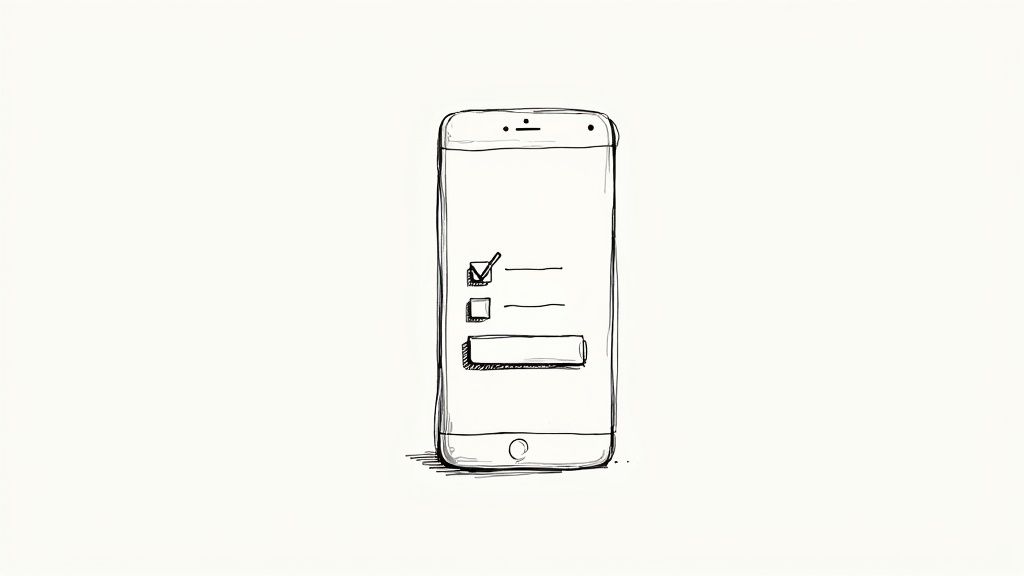Feeling the pressure to keep your social media channels active and engaging? You are not alone. Consistently producing quality posts can be quite a challenge, not even for experienced creators. A comprehensive guide to content marketing can give you the structure you need, which is why this article is here to help.
This guide goes beyond theory to share 10 proven social media content creation ideas you can implement right away. Each idea will include actionable steps, real examples, and optimization tips using tools like Postiz. Whether you are a solo creator, small business, or agency, these ideas will help you build a consistent, results-driven content strategy that actually resonates with your audience and grows your brand.
The Rise of Video & Short-Form Content
Social media today is overwhelmingly visual. Video now dominates every major platform, from TikTok and Instagram Reels to YouTube Shorts. In fact, people watch over 138 million Facebook and Instagram Reels every minute. Short-form video isn’t just a passing trend; it’s the most engaging format online. Incorporating tutorials, behind-the-scenes clips, and user-generated videos into your content plan will help you reach audiences where they spend the most time.
1. Tutorial and How-To Content
Tutorials and how-to guides are among the most effective content creation ideas for social media because they directly meet your audience’s need for quick, actionable knowledge. This format breaks complex tasks into clear, step-by-step instructions — helping users achieve real results while positioning you as an expert in your niche.
This builds trust, authority, and engagement that is essential in any successful social media content strategy. Brands like Adobe have mastered this model, whereby educational tutorials turn into a loyal, well-informed community of advocates.

How to Implement This Idea
- Identify Pain Points: Utilize keyword tools to identify “how-to” questions your audience searches for most, such as “how to schedule social media posts”.
- Structure Clearly: Break the process into short, numbered steps with simple, clear language.
- Add Visuals: Make complex ideas simple by embedding screenshots, short videos, or carousels.
- Create a Series: One tutorial gets turned into an entire learning sequence, such as the “Social Media Mastery” mini-series across different posts or platforms.
2. Behind-the-Scenes Content
Behind-the-scenes posts are among the most genuine ways to create content for social media, helping one show the people, process, and story behind the brand. Such content helps in building trust and relatability by turning casual followers into loyal fans through transparency and storytelling.
This form of brand storytelling provides real peeks into your culture and values and serves to build emotional connection and long-term engagement as a result.

How to Implement This Idea
-
Show Real Moments: Capture brainstorming sessions, product prep, or your workspace in action.
-
Feature the Team: Highlight team members and their roles to humanize your brand.
-
Share Challenges and Wins: Authenticity builds trust; share your creative journey, not just the polished results.
-
Keep It Polished Yet Natural: Use clear visuals and captions that feel conversational and honest.
3. User-Generated Content Campaigns
User-Generated Content (UGC) campaigns are one of the most effective content creation ideas for social media because they transform your audience into brand storytellers. This strategy encourages customers to create and share content that features your product or service — building trust, authenticity, and a strong sense of community.
UGC has been a cornerstone of modern social media content strategy, making your feed a living gallery of real customers’ experiences and organic social proof. Brands like GoPro and Starbucks live off of UGC-from GoPro’s adventure-filled customer videos to Starbucks’ #RedCupContest, spurring on thousands of fan submissions each year.

How to Implement This Idea
- Branded Hashtag: Create a short, memorable hashtag that will be used in collecting user submissions and reinforcing brand identity.
-
Set Simple Guidelines: Offer clarity on what type of content you want but leave space for creativity.
- Offer Incentives: Encourage participation with recognition, discounts, or prizes for standout content.
-
Engage Publicly: Like, comment, and share user posts. Featuring participants regularly builds community and boosts engagement. To discover more on this, learn how to boost social media engagement on Postiz.com.
4. Interactive Content Formats
Among the most engaging content ideas, interactive content turns passive scrollers into active participants. Quizzes, polls, calculators, and AR filters create a two-way communication with your audience, making your content much more memorable and shareable.
This approach boosts social media engagement by adding a personal, fun element to your posts. Interactive experiences, on the other hand, will help you acquire information about your audience while providing real value-be it a quiz result, a quick poll, or a personalized recommendation. Brands such as BuzzFeed and Spotify’s “Wrapped” campaign have shown exactly how interactive content may go viral and strengthen brand connection.
How to Implement This Idea
-
Start Simple: Use Instagram polls, “This or That” stories, or quick quizzes to see what resonates.
-
Focus on Value: Offer a useful or entertaining takeaway that feels personalized.
-
Design for Sharing: Create eye-catching results or badges users will want to post on their feeds.
-
Optimize for Mobile: Most users interact on phones, so ensure your experience is smooth and responsive.
5. Trend-Based Content Creation
Trend-based content is a high-impact content creation idea for social media that leverages viral topics, memes, and cultural moments to boost visibility. This strategy helps your brand join relevant conversations and stay top-of-mind while feeling fresh and relatable.
When done strategically, trend-driven content extends reach and increases engagement by aligning with what your audience is already talking about. Brands like Oreo’s famous “You can still dunk in the dark” tweet and Duolingo’s witty TikTok trends illustrate how timely participation can turn awareness into viral momentum.
How to Implement This Idea
-
Monitor Real-Time Trends: Track trending hashtags, TikTok sounds, or viral challenges in your niche.
- Act Quickly: Timeliness is everything, publish while the topic is still hot.
- Keep It On-Brand: Only be participating in trends that fit your brand’s tone and audience.
-
Add Your Spin: Don’t copy trends , adapt them to your message for originality and authenticity.
6. Educational Series and Courses
Moving one step further, an educational series or course offers structured, sequential content to take audience teaching to the next level. Instead of a single tutorial, you provide an extended learning experience over several posts or videos. This actually cements your position as a real authority and thought leader since you will be taking your audience from a beginning to an advanced understanding of something. This is a great idea for content creation if community building is your aim.
This format fosters deep engagement and loyalty. When an audience invests time in learning from your multi-part series, they form a connection with your brand. Think of how platforms like Skillshare and MasterClass have built whole businesses off this model, providing value worth coming back for.
How to Implement This Idea
- Choose Your Expertise: Start with a topic where you have deep knowledge and passion. Your authority and enthusiasm will be crucial for keeping your audience engaged throughout the series.
- Outline Your Modules: Break down the complex topic into logical, bite-sized modules or episodes. Plan a clear learning path, starting with foundational concepts and building toward more advanced skills.
- Include Practical Tasks: Go beyond theory by including practical exercises, worksheets, or real-world case studies. Actionable tasks help reinforce learning and demonstrate the value of your teachings.
- Build a Community: Use your course as a foundation to create a community. Encourage discussion in the comments, create a dedicated social media group, or host live Q&A sessions to support your learners.
7. Data-Driven Storytelling
Data-driven storytelling is a compelling content creation idea wherein complex information is communicated as an engaging and accessible narrative. Combining hard data, research insights, and compelling storytelling techniques will press dry statistics into memorable and persuasive ones. Rather than being told mere numbers, one sews those numbers together into a story that touches the heart of your audience, making your points all that much more impactful and authoritative.
This positions your brand as a thought leader by giving substance to your claims with evidence. When you tell a story with data, there is a unique value that your competitors just can’t match. Success stories like Spotify’s annual “Wrapped” campaign and HubSpot’s “State of Marketing” reports illustrate how data creates highly shareable and anticipated content for audiences.
How to Implement This Idea
- Start With a Question: Begin by forming a compelling question or hypothesis that your data will answer. For example, “What are the biggest challenges facing small businesses in 2024?” This gives your story a clear focus.
- Structure the Narrative: Use a classic storytelling framework (e.g., problem, exploration, solution) to structure your data. Present the initial finding, explore its implications, and conclude with actionable insights for your audience.
- Invest in Visualization: Use high-quality charts, graphs, and infographics to bring your data to life. Tools like Canva or Tableau can help you create professional-looking visuals that make complex information easy to digest.
- Maintain Transparency: Always cite your sources and be transparent about your methodology. This builds trust and reinforces the credibility of your findings, making your content a more reliable resource.
8. Repurposing and Content Atomization
Repurposing and content atomization is one of the most efficient content creation ideas available. It’s a strategic approach where you take one large, comprehensive piece of content and break it down into smaller, distinct assets to be shared across multiple platforms. This method maximizes the value of your initial effort, dramatically increases your reach, and saves significant creation time.
This strategy allows you to meet your audience where they are, with content formatted specifically for their preferred platform. For example, a single webinar can be “atomized” into a blog post, several short video clips for Instagram Reels, a quote graphic for X (formerly Twitter), and an audio-only version for a podcast. Entrepreneurs like Gary Vaynerchuk have built entire media empires on this model, turning one keynote speech into dozens of pieces of micro-content.To dive deeper into this method, explore our step-by-step guide on content repurposing strategies for maximizing your existing assets across all platforms.
How to Implement This Idea
- Start with a “Pillar” Piece: Your foundation should be a substantial piece of content like a webinar, a long-form blog post, a video podcast, or an in-depth guide. This pillar will serve as the source for all repurposed assets.
- Map Your Content Derivatives: Before you even publish the pillar piece, brainstorm all the potential smaller assets you can create from it. Think about different formats: quotes, infographics, short videos, checklists, and audio clips.
- Optimize for Each Platform: Don’t just copy and paste. Adapt the tone, length, and format of each derivative to suit the platform where it will be shared. A LinkedIn post will have a more professional tone than an Instagram Story. Learn more about effective content repurposing strategies on postiz.com.
- Schedule and Distribute: Use a social media scheduler like Postiz to plan and automate the distribution of your atomized content over days or weeks. This ensures a consistent stream of valuable posts without constant manual effort.
9. Collaborative Content Creation
Collaborative content creation involves partnering with other creators, brands, or experts to produce content that benefits everyone involved. This strategy taps into combined audiences and expertise, allowing you to reach new people and add fresh perspectives to your channel. By joining forces, you can create something more valuable than you could alone, from co-hosted webinars to joint research papers.
This approach is one of the most effective content creation ideas for rapid growth and authority building. When you partner with a respected peer, their credibility and trust transfer to your brand, giving you an instant boost. Popular YouTube collaborations and Instagram takeovers are perfect examples of how combining forces can lead to significant audience expansion and engagement for both parties.
How to Implement This Idea
- Find Aligned Partners: Look for collaborators whose audience complements yours but doesn’t directly compete. Their brand values and content quality should align with your own.
- Define Clear Roles: Before starting, create a clear agreement that outlines responsibilities, deliverables, content ownership, and promotional expectations to avoid misunderstandings.
- Showcase Mutual Strengths: Plan content that allows both you and your partner to shine. An expert interview, a joint tutorial, or a co-hosted podcast episode are great formats for this.
- Cross-Promote Extensively: The real power of collaboration comes from cross-promotion. Ensure all participants promote the finished content across their respective channels to maximize reach and impact. You can explore a variety of social media collaboration tools on postiz.com to streamline this process.
10. Seasonal and Event-Based Content
Seasonal and event-based content involves creating posts that align with holidays, seasons, industry events, or cultural moments. This strategy is one of the most effective content creation ideas because it taps into existing conversations and emotions, making your brand feel timely and relevant. By connecting with what your audience is already thinking about, you can significantly boost engagement and visibility.
This approach creates a powerful sense of connection and shared experience. When audiences see content celebrating a holiday or a seasonal shift, it feels personal and relatable, strengthening their bond with your brand. Think of how Starbucks builds immense hype with its Pumpkin Spice Latte launch each fall or how retail brands dominate conversations during Black Friday. These campaigns succeed by becoming part of the seasonal tradition itself.
How to Implement This Idea
- Build a Content Calendar: Map out key holidays, industry conferences, and seasonal dates relevant to your niche for the entire year. This helps you plan ahead and avoid last-minute rushes.
- Prepare in Advance: High-quality seasonal campaigns aren’t created overnight. Start designing graphics, writing copy, and scheduling posts weeks or even months ahead of time to ensure a polished execution.
- Add a Unique Brand Spin: Avoid generic “Happy Holidays” posts. Instead, find a creative angle that ties the event back to your brand’s core message. A fitness brand, for example, could create “12 Days of Fitmas” workouts.
- Optimize for Seasonal Keywords: Research and incorporate trending seasonal keywords to capture search traffic. For example, use phrases like “summer marketing ideas” or “Black Friday deals for small business” to attract a relevant audience.
The Creator Economy & AI Evolution
The content creation landscape has transformed dramatically, the creator economy now exceeds $250 billion globally, driven by millions of independent creators and AI-powered tools. AI platforms help with ideation, writing, and scheduling, enabling smaller teams to compete with large marketing departments. Integrating AI-powered schedulers like Postiz or optimization tools can streamline your workflow while maintaining creativity.
Content Creation Ideas Comparison Matrix
| Content Type | Implementation Complexity 🔄 | Resource Requirements ⚡ | Expected Outcomes 📊 | Ideal Use Cases 💡 | Key Advantages ⭐ |
|---|---|---|---|---|---|
| Tutorial and How-To Content | Medium to High (detailed step-by-step) | Moderate to High (expertise, visuals) | High engagement, strong SEO, evergreen value | Skill-building, problem solving, educational marketing | High authority, SEO potential, trust-building |
| Behind-the-Scenes Content | Low to Medium (authentic, less polished) | Low to Moderate (candid shots, team involvement) | Increased brand authenticity and emotional connection | Brand personality, culture showcase, transparency | Builds trust, cost-effective, emotional bonding |
| User-Generated Content Campaigns | Medium (community management required) | Low to Moderate (incentives, moderation) | High brand reach, community engagement, social proof | Social campaigns, brand awareness, peer influence | Authenticity, cost-effective, conversion boost |
| Interactive Content Formats | High (technical, multi-step engagement) | High (development, maintenance) | Higher engagement, data collection, shareability | User participation, personalized experience, gamification | Memorable experiences, valuable data, strong engagement |
| Trend-Based Content Creation | Medium to High (requires quick response) | Low to Moderate (fast content creation) | Viral reach, algorithmic boost, relevance demonstration | Timely campaigns, viral marketing, social media buzz | High virality potential, cost-effective visibility |
| Educational Series and Courses | High (structured curriculum, sustained effort) | High (content creation, expertise, delivery platforms) | Strong authority, recurring engagement, monetization potential | Deep learning, thought leadership, long-term audience | High value perception, builds community, monetizable |
| Data-Driven Storytelling | High (research, data visualization) | High (data analysis, visualization tools) | High credibility, B2B appeal, media attention | Complex topics, authoritative reports, B2B marketing | Strong authority, SEO advantages, credible insights |
| Repurposing and Content Atomization | Medium (strategic planning required) | Moderate (multi-format production) | Maximized content ROI, consistent posting, wider reach | Multi-channel distribution, content efficiency | Increased ROI, time saving, audience diversity |
| Collaborative Content Creation | Medium to High (coordination, alignment) | Moderate (shared resources, planning) | Expanded reach, credibility boost, fresh perspectives | Partnerships, co-creation, cross-promotion | New audiences, cost sharing, enhanced credibility |
| Seasonal and Event-Based Content | Medium (timely planning essential) | Low to Moderate (event-driven content) | Predictable engagement spikes, SEO benefits | Holiday campaigns, industry events, cultural moments | Timely relevance, SEO boost, creative campaign hooks |
Turn Your Ideas into a High-Performing Content Machine
Coming up with a constant stream of powerful content creation ideas is the foundational challenge for any creator or brand. The real test, however, lies in transforming those sparks of inspiration into a consistent, high-performing content engine that drives engagement and growth. We’ve explored a diverse toolkit, from the trust-building power of behind-the-scenes glimpses and detailed how-to guides to the community-centric energy of user-generated content campaigns. The journey doesn’t end with a single good idea; it thrives on a strategic and sustainable approach.
The key takeaway is to move beyond one-off posts and build a holistic content ecosystem. This means blending different formats to keep your feed dynamic. Imagine pairing a data-driven infographic with a collaborative interview, followed by an interactive poll. This variety not only prevents audience fatigue but also caters to different consumption habits, maximizing your reach and impact.
From Brainstorming to Strategic Execution
The most successful creators don’t just have good ideas; they have great systems. Mastering content atomization allows you to turn one major piece of content, like an educational series, into dozens of smaller assets for different platforms. This maximizes your effort and ensures a steady flow of valuable posts without constant brainstorming. Similarly, integrating trend-based content with evergreen seasonal posts creates a balanced calendar that is both timely and has long-term value.
Ultimately, your content should serve a greater business purpose. As you map out your calendar with these diverse content creation ideas, it’s crucial to align them with your growth goals. To ensure your content machine effectively contributes to your business objectives, explore various strategies to attract new customers, which can inform your content planning and topics. This strategic alignment turns your creative efforts into measurable results.
Your Next Steps to Content Mastery
Don’t let this list just be another article you read. Take immediate, actionable steps to implement these strategies:
- Audit Your Current Content: Identify gaps. Are you relying too heavily on one format? Which of these ideas can you implement this week?
- Plan a “Content Theme” Month: Dedicate the next four weeks to a specific theme, such as “Behind the Scenes” or an “Educational Series,” to build momentum and see what resonates.
- Embrace a System: Use a tool to schedule your posts, plan your repurposed content, and track performance. An organized workflow is the bridge between a great idea and a successful campaign.
The path to becoming a content powerhouse is paved with creativity, consistency, and smart execution. By combining the ideas we’ve covered, you’re not just filling a calendar; you’re building a brand, fostering a community, and creating a reliable engine for growth. Stop waiting for inspiration to strike and start building your content machine today.
As you implement these ideas, focus on engagement metrics to measure what truly resonates. Learn how to boost social media engagement and make every post count.
Ready to turn your best content creation ideas for social media into an unstoppable content schedule? Postiz provides the ultimate platform to plan, schedule, and analyze your content across all your social channels. Try Postiz today and transform your creative workflow into a powerful engine for growth.





